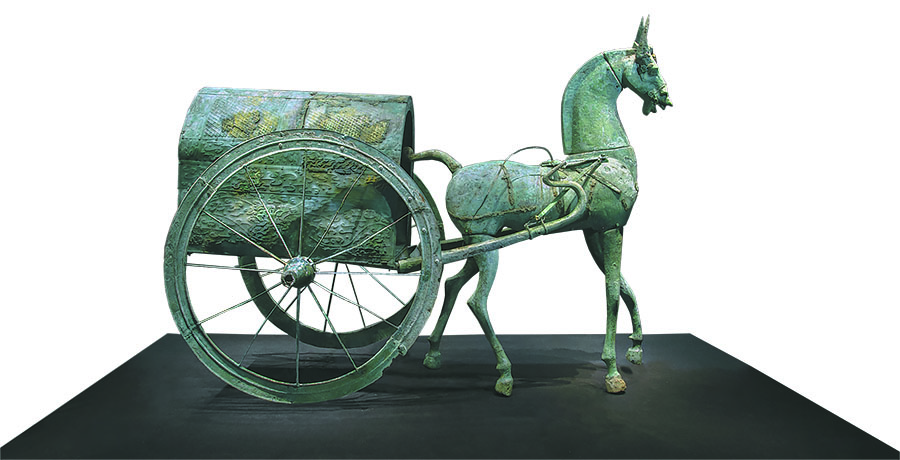

Guizhou exhibition provides a tantalizing glimpse into an ancient culture, Yang Feiyue and Yang Jun report in Guiyang.
A tomb offering of a bronze chariot and horse from the Eastern Han Dynasty (25-220) has been the center of attention since it was unveiled in February at the Guizhou Provincial Museum in the provincial capital of Guiyang. Known as the Zi Chariot, it is 1.12 meters in length and 0.88 meters in height.
"It is made of bronze, and shows exquisite craftsmanship," says He Jiaojiao, a guide at the museum, adding that the find demonstrates the strength and organization of the ancient kingdom's armed forces.
The artifact includes a horse with the carriage, and consists of more than 200 components.
"The horse is made up of 11 sections, including head, tail, neck, legs, body and ears, and is posed tail arched with its head held high, and standing on three legs with one lifted as if ready to gallop," He says.
The carriage consists of the driver's seat, wheels and axles, and a carriage box with a canopy. "The canopy curls into a U shape, and the back of the carriage is decorated with hollowed-out floral patterns. Not only are there patterns of mats on the carriage, there are also cloud patterns," she adds.
According to the experts, the chariot and horse is significant for being one of the most complete of its kind and offers insights into the study of transportation, as well as the Han Dynasty (206 BC-AD 220) bronze casting process.
It is one of the highlights of The Exhibition of Colorful History and Cultures in Guizhou — Landscapes Carry Rich Humanities, Mountains Carry Lengthy Time, which systematically presents a comprehensive history of Guizhou's 300,000 years of heritage.
"It's a heavyweight exhibition meticulously put together over a period of three years," says Li Fei, curator of the Guizhou museum.